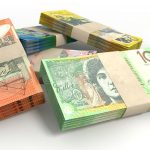Gold draws buyers and rises to a high of more than a week.
During Thursday’s Asian session, the price of gold (XAUUSD) continues its weekly upward trend for the fourth day in a row, reaching a new one-and-a-half-week high of $2,660.
The safe-haven XAUUSD benefited by geopolitical risks resulting from the Russia-Ukraine conflict.
Growing geopolitical unpredictability, stoked by rising tensions between Russia and Ukraine, keeps causing haven flows to traditional safe-haven assets and helps the precious metal bounce back from a two-month low that reached last week. Bullion, regarded as an inflation hedge, additionally appears to profit from predictions that the proposed tariffs proposed by US President-elect Donald Trump may increase inflationary pressures.
However, excessive inflation may restrict the Fed’s ability to loosen monetary policy. Additionally, concerns that Trump’s debt-financed tax cuts would result in wider budget deficits continue to support high yields on US Treasury bonds. This could therefore serve as a headwind for the non-yielding price of gold and help the US dollar (USD) remain stable just below the year-to-date (YTD) peak reached last week. In addition, before making aggressive bullish bets on the XAUUSD, one should exercise caution due to the general risk-on sentiment, which reflected in the generally positive tone surrounding the equity markets.
Daily Market update: Gold continues to draw haven flows due to Russia and Ukrine tensions.
Geopolitical Following Russian President Vladimir Putin’s lowering of the threshold for nuclear strikes and support for the safe-haven gold price for the fourth consecutive day on Thursday, tensions escalated.
Investors appear to be certain that the expansionary policies put forth by US President-elect Donald Trump could hasten inflation and compel the Fed to slow the rate-cutting cycle.
Furthermore, a number of prominent Fed officials recently issued warnings about additional policy easing, which maintains the US dollar close to its year-to-date high and supports high US Treasury bond yields.
On Wednesday, Lisa Cook, a member of the Federal Reserve Board of Governors, pointed out that if inflation progresses more slowly, the central bank may be forced to halt interest rate cuts.
Fed Governor Michelle Bowman stated separately that the The US central bank should adopt a cautious monetary policy stance as inflation progress seems to have stalled.
More interest rate cuts are required, but policymakers should proceed cautiously to avoid going too fast or too slow, according to Boston Fed President Susan Collins.
Traders are currently pricing in a little more than 50% chance that the Fed will reduce borrowing costs at its December monetary policy meeting, according to the CME Group’s FedWatch Tool.
The US dollar supported by high US bond yields, which may also cap the non-yielding yellow metal.
The benchmark 10-year US government yield increased by the most in a week on Wednesday, which could cap the safe-haven precious metal due to a positive risk sentiment.
The US economic docket for Thursday includes the Philadelphia Fed Manufacturing Index, the weekly initial unemployment claims, and data on current home sales later in the North American session.
Additionally, investors will be watching Fed policymakers’ speeches closely for clues about the future path of rate cuts, which will push the USD and give the non-yielding XAUUSD some boost.









